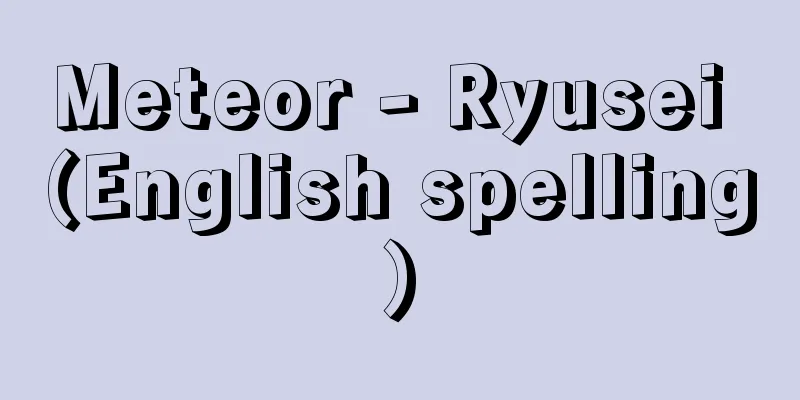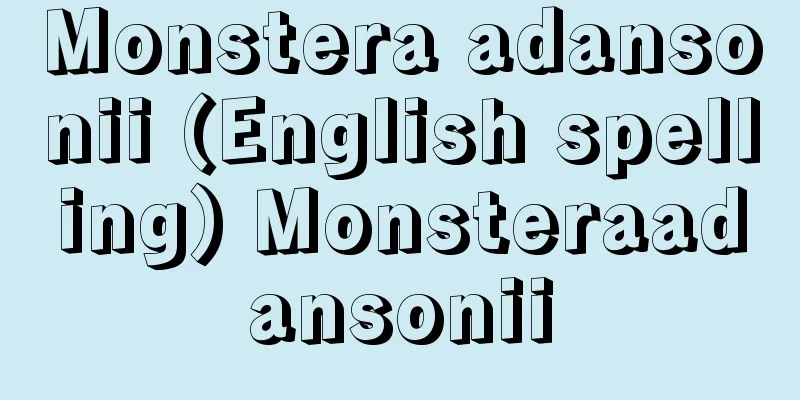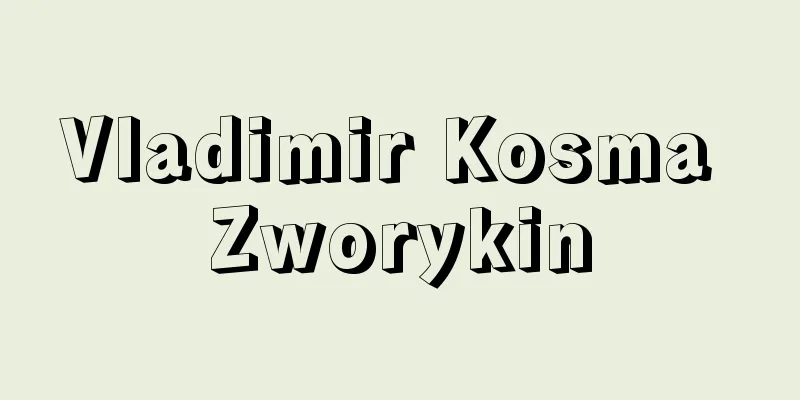Chinese Nationalist Party

|
A revolutionary political party formed in Guangzhou in 1919 after the Xinhai Revolution by the union of various revolutionary factions. Its abbreviation is KMT (Kuomintang). Its English name is Chinese Nationalist Party. In 1921, Sun Yat-sen (Sun Yat-sen), a powerful leader of the revolutionary faction, became president and decided to cooperate with the Communist Party (the First Kuomintang-Communist Party Cooperation). After Sun Yat-sen died of illness in 1925, Chiang Kai-shek (Chiang Kai-shek) became leader and unified the country in 1928, becoming a dictatorial party. However, after the Anti-Japanese War, it lost the civil war with the Communist Party and moved to Taiwan. It became an opposition party after losing the general election in 2000 to the Democratic Progressive Party, but returned to the ruling party in 2008. The party's platform is based on the Three Principles of the People (ethnic group, civil rights, and people's livelihood) advocated by Sun Yat-sen. [Kougo Tsuji] Republic of China period (1912-1949)The 1911 Xinhai Revolution overthrew the last dynasty, the Qing Dynasty, and the Republic of China was established the following year in 1912. Sun Yat-sen, a powerful leader of the revolutionary movement, became provisional president, but was defeated by the powerful Yuan Shikai. He then moved south to establish a revolutionary government in Guangdong and became president in 1921. In 1924, the Nationalists cooperated with the Chinese Communist Party (the First Kuomintang-Communist Cooperation), and strengthened their military power with the help of the Soviet Union. After Sun Yat-sen's death in 1925, the Nationalists began the Northern Expedition under Chiang Kai-shek, and in the middle of the expedition, an anti-communist coup was carried out in 1927 to suppress the Communist Party, which fled to the provinces, established bases, and continued to resist. The Nationalists completed national unification, established the capital in Nanjing, and established a dictatorial system. However, while conflicts with local powers, including the Communist Party, continued, Japanese invasions progressed, and the Xi'an Incident occurred in 1936. Zhang Xueliang, who had been driven out of the northeast (Manchuria) by the Japanese army, placed Chiang Kai-shek under house arrest and urged him to end the civil war and form an anti-Japanese united front. The following year, in 1937, the Marco Polo Bridge Incident broke out, starting a full-scale Sino-Japanese war, and the Kuomintang cooperated with the Communist Party again (the second Kuomintang-Communist cooperation). Driven out by the Japanese army, the Kuomintang government retreated to Chongqing, where it continued to resist. After Japan's defeat in 1945, the Kuomintang and Communist parties met in Chongqing, but civil war between the two parties resumed, and by 1949 the Kuomintang forces had been defeated by the Communist forces and moved to Taiwan. [Kougo Tsuji] Taiwanese colonial period (1946-2000)Even after moving to Taiwan, Chiang Kai-shek continued to confront the People's Republic of China under the banner of a counterattack against the mainland, and strengthened his dictatorial regime. However, the dictatorial regime and corruption of the government intensified the conflict between the "waishengren" (mainlanders) who had migrated from the mainland and the "benshengren" (Taiwanese), and on February 28, 1947, a large-scale demonstration broke out, which was suppressed by force in the "February 28 Incident," resulting in a large number of casualties (as many as 30,000). In 1952, Chiang Kai-shek carried out a large-scale party reform, aiming for economic development while maintaining his dictatorial regime. Tensions continued in the Taiwan Strait, but in 1958 the People's Liberation Army's Kinmen Island operation failed, and in 1961 the artillery battle was called off, resulting in a stalemate in the offensive and defensive situation in the Taiwan Strait. Chiang Ching-kuo (Chiang Kai-shek's eldest son), who became Premier in 1972, focused on economic development and achieved success, but at the same time, Taiwan became increasingly isolated internationally due to the loss of its UN representation in 1971, the rapprochement between the United States and China in 1972, and the normalization of diplomatic relations between Japan and China. After Chiang Kai-shek's death in 1975, Chiang Ching-kuo became Party leader and was inaugurated as President in 1978. Chiang Ching-kuo sought to democratize Taiwan, and in 1984, he appointed Lee Teng-hui (a Taiwanese man) as vice president, deepening his reliance on the "original Taiwanese." Under pressure from the United States, he also worked to reform the dictatorial regime by allowing the formation of an opposition party in 1987, lifting restrictions on newspapers, lifting martial law that had been in place since his move to Taiwan, and allowing the publication of private newspapers. In 1988, Chiang Ching-kuo died, and Lee Teng-hui became the first Taiwanese-born president and became chairman of the Kuomintang. Lee Teng-hui also promoted further democratization in Taiwan, and in 1994, a system of direct presidential elections was established. China, as a proponent of Taiwanese independence, exerted various pressures on Lee Teng-hui, such as large-scale military exercises and missile tests before the 1996 general election, but Lee Teng-hui was elected as the first democratically elected president of the Republic of China. After his election, Lee Teng-hui strengthened his support for independence and suggested the idea of Taiwan as a sovereign state. [Kougo Tsuji] Multiparty era (2000-)In the 2000 presidential election, the KMT split, and Chen Shui-bian (Chen Shui-bian) of the Democratic Progressive Party (DPP) was elected. When the DPP was in opposition, it advocated Taiwanese independence, but after becoming the ruling party, it changed its wording and still sought independence. In any case, the KMT, which was a dictatorial party in both name and reality, became an opposition party, and Taiwan's democratization was completed. However, China increased pressure on Chen Shui-bian as a Taiwanese independence supporter, and tensions intensified in relations with the mainland. The DPP won again in the 2004 election, but scandals within the party and Chen Shui-bian's family were exposed, and the KMT suffered a crushing defeat in the 2008 general election. Ma Ying-jeou (Ma Ying-jeou), who had been elected chairman of the KMT in 2005, became president, but the KMT has not been revived as a dictatorial party and continues to run the government as the ruling party. The Chinese Communist Party supports the Kuomintang, due to the precedent of past cooperation between the Kuomintang and the Communist Party, and is deepening its contact with Taiwan under the Ma administration. Ma Ying-jeou has also implemented the so-called "three links" policy of "trade, navigation, and postal services" such as the opening of direct flights to the mainland since 2008, and is working to strengthen practical relations with the mainland. However, at the same time, he has adopted the so-called "three no policy" of not pursuing "unification, Taiwan independence, or the use of force," and continues to maintain the status quo by importing weapons from the United States. [Kougo Tsuji] "Chiang Kai-shek and Mao Zedong" by Koichi Nomura (1997, Iwanami Shoten)" " The Three Principles of the People, Volumes 1 and 2, by Sun Yat-sen, translated by Hikotaro Ando (Iwanami Bunko)" [Reference Items] | | | | | | -kuo | | | Sun Yat | | |Source: Shogakukan Encyclopedia Nipponica About Encyclopedia Nipponica Information | Legend |
|
辛亥革命後の1919年、広州で革命諸派が連合して結成した革命政党。略称KMT(Kuomintang)。英語表記はChinese Nationalist Party。1921年革命派の有力指導者であった孫文(そんぶん/スンウェン)が大総統に就任し、共産党との協力(第一次国共合作)を決定した。1925年孫文が病死後、蒋介石(しょうかいせき/チヤンチエシー)が指導者となり、1928年全国を統一して独裁政党となった。しかし抗日戦後、共産党との内戦に敗れ、台湾に移動した。2000年の総選挙で民進党に敗れ野党となるが、2008年に与党に復活した。孫文が唱えた三民主義(民族・民権・民生)を党綱領としている。 [辻 康吾] 中華民国期(1912~1949年)1911年の辛亥革命(しんがいかくめい)で最後の王朝清(しん)が倒れ、翌1912年中華民国が成立した。革命運動の有力指導者であった孫文が臨時大総統に就任したが、実力者であった袁世凱(えんせいがい/ユアンシーカイ)に敗れ、南下して広東で革命政権を樹立し、1921年大統領に就任した。1924年中国共産党と合作(第一次国共合作)し、ソ連の援助を得て軍事力を強化した。1925年の孫文の死去以後、蒋介石を指導者として北伐を開始し、その途上1927年に反共クーデターで共産党を弾圧、共産党は地方に逃れ、根拠地を建設し抵抗を続けた。国民党軍は全国統一を完成させ、南京(ナンキン)に首都を置き、独裁体制をとった。しかし共産党を含め、地方勢力との抗争が続く一方、日本の侵出が進み、1936年西安(せいあん/シーアン)事件が発生した。日本軍に東北(満州)を追われた張学良(ちょうがくりょう/チャンシュエリヤン)が蒋介石を軟禁し、内戦の中止と抗日統一戦線の結成を迫った。翌1937年の盧溝橋(ろこうきょう/ルーコウチアオ)事件の勃発(ぼっぱつ)で日中全面戦争が始まり、国民党は共産党とふたたび合作した(第二次国共合作)。日本軍に追われた国民党政権は重慶(じゅうけい/チョンチン)に撤退し、抗戦を続けた。1945年日本が敗北すると、国共両党は重慶で会談するが両党間の内戦が再発し、1949年までに国民党軍は共産党軍に敗れ、台湾に移動した。 [辻 康吾] 台湾統治期(1946~2000年)台湾に移動後も蒋介石は大陸反攻を掲げて中華人民共和国との対決を続け、独裁体制を強化した。しかし独裁体制や政権の腐敗によって大陸から移動してきた「外省人」と「本省人」(台湾省人)の対立が激化し、1947年2月28日大規模なデモが発生し、これを武力鎮圧する「二・二八事件」によって大量の犠牲者(3万人ともいわれる)が出た。1952年蒋介石は大規模な党改革を行い、独裁体制を維持しつつ経済発展を目ざした。台湾海峡ではその後も緊張が続いていたが、1958年人民解放軍の金門島作戦が失敗し、1961年には砲撃戦も中止となり、台湾海峡での攻防は膠着(こうちゃく)状態となった。1972年行政院長に就任した蒋経国(しょうけいこく/チヤンチンクオ)(蒋介石の長男)は、経済発展に力を入れ成功を収めたが、同時に1971年の国連代表権の喪失、1972年の米中接近、日中国交正常化など国際的に孤立化を深めた。1975年蒋介石が死去すると、蒋経国が党首となり、1978年には総統に就任した。 蒋経国は台湾の民主化を図り、また1984年には台湾出身の李登輝(りとうき/リートンホイ)を副総統に就任させるなど「台湾本省人」への依存を深めた。またアメリカの圧力もあり、1987年からは野党の結成を認め、新聞統制を解除し、台湾への移動後続けられていた戒厳令を解除、民間新聞の発行を許可するなど独裁体制の変革に努めた。1988年蒋経国が死去し、李登輝が台湾出身者として初めての総統となり、国民党主席に就任した。李登輝も台湾のいっそうの民主化を進め、1994年には総統の直接選挙制を敷いた。中国は、李登輝を台湾独立論者として1996年の総選挙を前に大規模な軍事演習やミサイル実験などでさまざまな圧力を加えたが、李登輝が中華民国初の民選総統に選出された。当選後の李登輝は独立色を強め、台湾の主権国家論などを示唆した。 [辻 康吾] 多党制時代(2000年~ )2000年の総統選挙では国民党の分裂もあり、民主進歩党(民進党)の陳水扁(ちんすいへん/チェンシュイピェン)が当選した。民進党は在野時代には台湾独立を掲げたが、与党となった以後は表現を改め、なお独立も模索した。ともあれこれで名実ともに大陸、台湾の独裁政党であった国民党は野党化し、台湾の民主化が完成した。しかし中国は陳水扁を台湾独立派として圧力を強め、大陸との関係は緊張が激化した。2004年の選挙でふたたび民進党が勝利したが、党内および陳水扁一族のスキャンダルが暴露され、2008年の総選挙で国民党に惨敗した。2005年に国民党主席に選出されていた馬英九(ばえいきゅう/マーインチウ)が総統に就任したが、国民党は独裁政党として復活することなく、政権与党として政権を運営している。中国共産党はかつての国共合作の前例もあり国民党を支持し馬政権の台湾との接触を深めている。馬英九も2008年から大陸との直行航空便の開設など「通商・通航・通郵」などのいわゆる「三通」政策を実現させ、大陸との実務関係の緊密化を図っている。だが同時に「統一、台湾の独立、武力行使」のいずれも行わないとするいわゆる「三不政策」をとり、またアメリカから武器を輸入するなど現状維持を続けている。 [辻 康吾] 『野村浩一著『蒋介石と毛沢東』(1997・岩波書店)』▽『孫文著、安藤彦太郎訳『三民主義』上下(岩波文庫)』 [参照項目] | | | | | | | | | | | | | | | | |出典 小学館 日本大百科全書(ニッポニカ)日本大百科全書(ニッポニカ)について 情報 | 凡例 |
<<: Chinese Writers Association
Recommend
Debye-Hückel theory
This theory of strong electrolyte solutions was de...
Saminism - Samin movement (English spelling)
A doctrine preached by a peasant named Serontiko (...
Long sword - Tachi
A sword from the Kofun period to the mid-Heian pe...
Production goods - Seisanzai (English spelling) production goods
They are goods used in the production process of ...
Intermediate orbit - chukankido (English spelling)
The orbital motion of planets and moons cannot be ...
ABBA
A world-famous Swedish pop group. Formed in 1973 b...
Odin's Proverbs - Odin's Proverbs
... <When a fool gets wealth or the love of a ...
Water gun - Mizudeppo
A water toy that applies the theory of suction pu...
Entomonotis
Entomonotis is a type of marine bivalve that flour...
Peace of mind - Peace of mind
〘 noun 〙 (also "anjin")① (━suru) To have...
Lake Kitagata
A long, narrow lake formed in a dissected valley ...
Passiflora caerulea; passionflower
An evergreen perennial vine of the Passifloraceae ...
Yellow calla lily - Yellow calla lily
...It grows in wetlands. The golden calla lily, o...
Ethiopian - Ethiopia (English spelling)
Currently, more than 70 languages are spoken in...
Egyptian lotus
…It seems to have been introduced to Japan from t...









